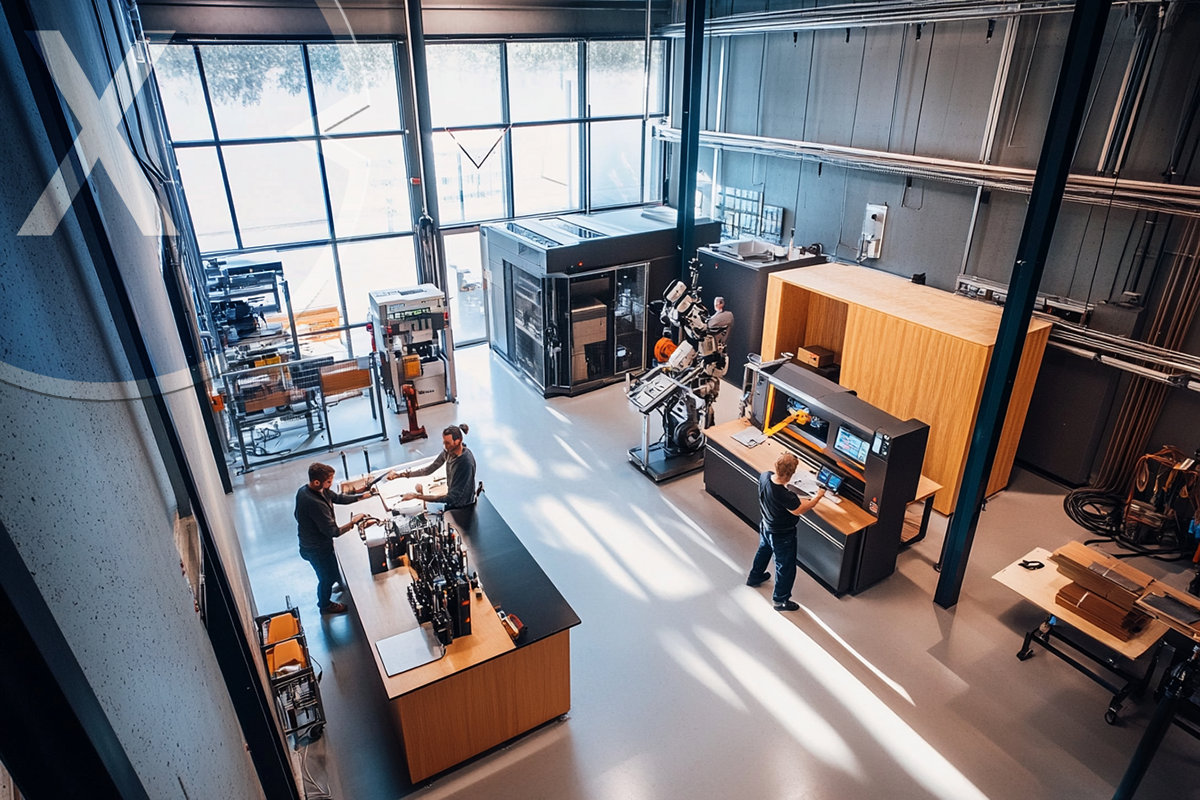Published on: November 7th, 2024 / Update from: November 7th, 2024 - Author: Konrad Wolfenstein

Human-machine collaboration in Industry 5.0: How symbiotic collaboration creates attractive jobs in medium-sized companies - Image: Xpert.Digital
Human-machine collaboration in Industry 5.0: Creation of attractive jobs in medium-sized companies through symbiosis
The world of industrial production is at the beginning of a new era, often referred to as Industry 5.0. This builds on the progress of Industry 4.0, but is more aimed at a symbiotic collaboration between people and machines, in which people are at the center and technology is there to support them. Industry 5.0 offers special opportunities for medium-sized companies as it can not only increase efficiency, but also increase the attractiveness of jobs by making work processes more human-centered and relieving the burden on employees.
Industry 5.0: A value-oriented continuation of Industry 4.0
The fourth industrial revolution has driven digitalization and automation of production in recent decades. But many medium-sized companies are still skeptical about the comprehensive digitalization that is being promoted under Industry 4.0. Standard solutions often appear too complex and expensive, and they often seem to exploit the technical possibilities rather than taking the specific requirements of smaller companies into account. In such scenarios, employees often feel more overwhelmed than supported.
Industry 5.0 starts here by not only focusing on technological efficiency, but also bringing people and machines into a synergetic relationship. People are seen as designers of the production process, whose cognitive and physical abilities should be optimally supported. The aim is not to replace human labor with machines, but rather to promote people's skills and reduce repetitive, physically demanding or monotonous tasks.
A practical example: Hybrid assembly of bicycle garages at Mitras Composites Systems GmbH and the Fraunhofer Institute for Machine Tools and Forming Technology (IWU)
The assembly of space-saving, modular bicycle garages can be intelligently automated, as a project by Fraunhofer IWU with the manufacturer Mitras Composite Systems GmbH shows. In particular, the reengineering enables the step towards larger quantities with a continued high variety of variants and leads to a more ergonomic workplace design. The employees were able to fully participate in the redesign process. – Image: Mitras Composite Systems GmbHAn example of the successful implementation of the principles of Industry 5.0 is the cooperation project between the Fraunhofer Institute for Machine Tools and Forming Technology (IWU) and Mitras Composites Systems GmbH. The aim of the project was to optimize the assembly processes for bicycle garages through hybrid automation. By introducing automation elements, employees could be relieved of heavy physical tasks so that they could use their energy and concentration on more value-adding tasks.
As part of the project, an in-depth needs and requirements analysis was carried out, during which the actual needs of the employees and the specific requirements of the production process were determined. The focus was on developing a solution that makes everyday work easier without overwhelming employees. By using robotics to support heavy lifting and handling tasks, employees can now be deployed regardless of age and gender. This type of human-machine collaboration increases flexibility and promotes an inclusive work environment where diversity is welcome.
Human-centered automation through cognitive task analysis
Human-centered automation requires careful analysis of workflows and close collaboration with employees. In the case of the Fraunhofer IWU and Mitras Composites project, a cognitive task analysis was carried out to understand the specific requirements of the assembly activities. This enabled tailored automation that provides support exactly where it is needed. According to Dr. For Isabel Kreißig from Fraunhofer IWU, it was particularly important to include the employees' perspectives in the development of the automation solution. Only through this dialogue-oriented approach could tailor-made solutions be developed that actually benefit employees.
Industry 5.0 lays the foundation for a new type of collaboration in which automation solutions do not replace people, but complement them. The role of people is thereby enhanced, as their skills and knowledge are actively incorporated into the process design. This not only helps to increase efficiency, but also improves workplace quality as employees experience the technology as supportive and value-adding.
Sustainability, resilience and value creation in focus
Another important feature of Industry 5.0 is its value orientation: the technology is aligned with the values of sustainability, resilience and people-centeredness. This offers an attractive perspective, especially for medium-sized companies, as they are often more affected by external market fluctuations and resource bottlenecks than large corporations. Human-centered and resilient automation enables these companies to respond more flexibly to changes and maintain production even in the event of disruptions.
The Fraunhofer IWU in Chemnitz is working intensively on developing solutions that are not only technologically innovative but also human-friendly. Dr. Franziska Bocklisch and her team rely on a research-oriented approach that focuses on the needs and abilities of employees. This leads to more robust and sustainable production, which is less prone to disruption and ensures long-term value creation.
Know-how and knowledge management: A sustainable advantage
Another central aspect of human-machine collaboration is securing and sharing knowledge. In many medium-sized companies, employees' know-how is a valuable asset that is often passed on informally. Through structured collection and documentation of this knowledge, companies can ensure that it is retained in the long term. This type of knowledge management is supported by Industry 5.0 because certain aspects of knowledge can be digitized and made accessible in the form of assistance systems.
Such systems not only help with the training of new employees, but also with continuous support and training in everyday work. Digital knowledge systems offer great advantages, particularly in areas such as quality assurance and error diagnosis, as they enable quick and precise problem solving. This type of knowledge transfer promotes the motivation of employees because they feel valued in their knowledge and can actively contribute to the further development of the company.
Suitable for:
Cognitive abilities as the key to human-machine integration
In addition to the physical relief, the cognitive abilities of employees are also crucial. Modern manufacturing environments require skills such as problem-solving, decision-making and flexibility to respond to unexpected challenges. https://xpert.digital/industry-b2b/#gsc.tab=0 Human-centered automation solutions support these skills by solving simple, repetitive tasks take over and offer employees space for more demanding tasks.
A good example of this is preventive maintenance, in which employees are supported by automation solutions in identifying and diagnosing machine problems. Such systems collect data and analyze patterns, which alerts employees to potential problems at an early stage and allows them to resolve them before a production downtime occurs. This shows that Industry 5.0 not only focuses on efficiency, but also on prevention and stability.
Industry 5.0 as an opportunity for medium-sized businesses
Industry 5.0 offers medium-sized companies the opportunity to assert themselves in increasingly global competition by combining technological innovations and human skills. Here, people are at the center of production and are supported by intelligent machines that improve their working conditions and promote their performance.
The introduction of human-machine collaboration has long-term benefits for companies: employees feel valued, remain loyal to the company and are more motivated. Production becomes more robust, more flexible and can continue to run stably even in times of crisis. Collaboration between humans and machines not only opens up technological advances, but also a new work culture based on collaboration, trust and mutual respect.
Industry 5.0 shows that automation and digitalization are not an end in themselves, but rather tools that can be used to put people at the center of production processes and to make work more humane, sustainable and fulfilling. The future of production lies in the symbiosis of people and machines - a partnership that offers opportunities for medium-sized businesses and contributes to a fairer and value-adding economy in the long term.
Suitable for:


